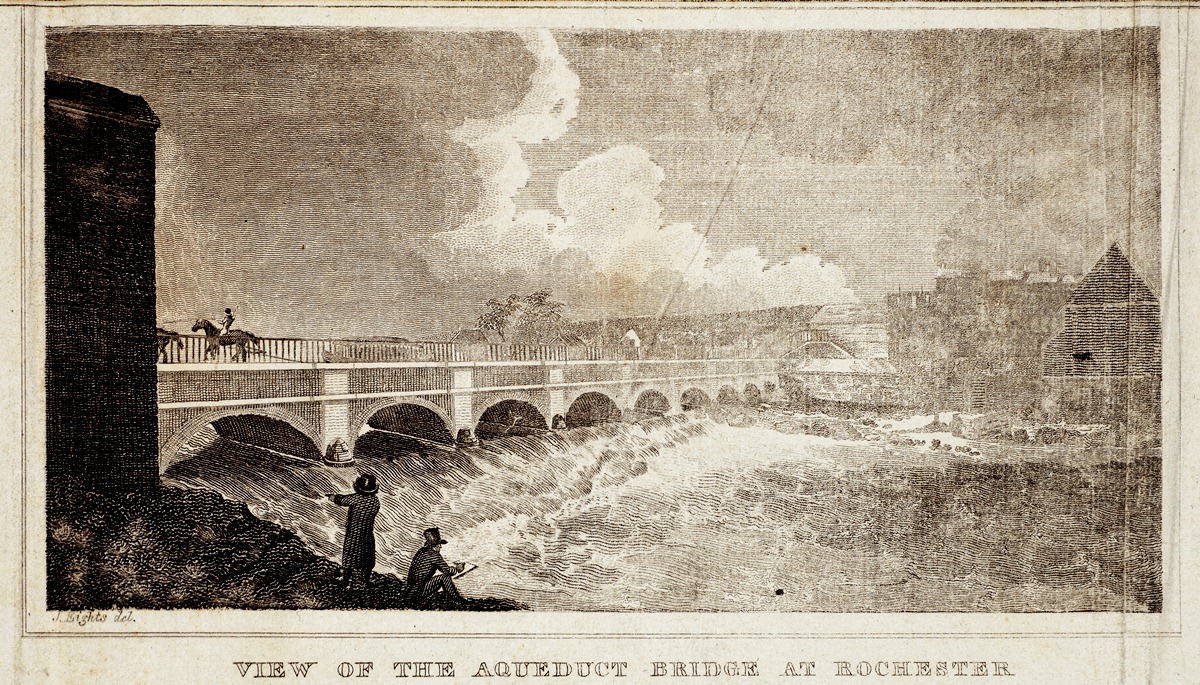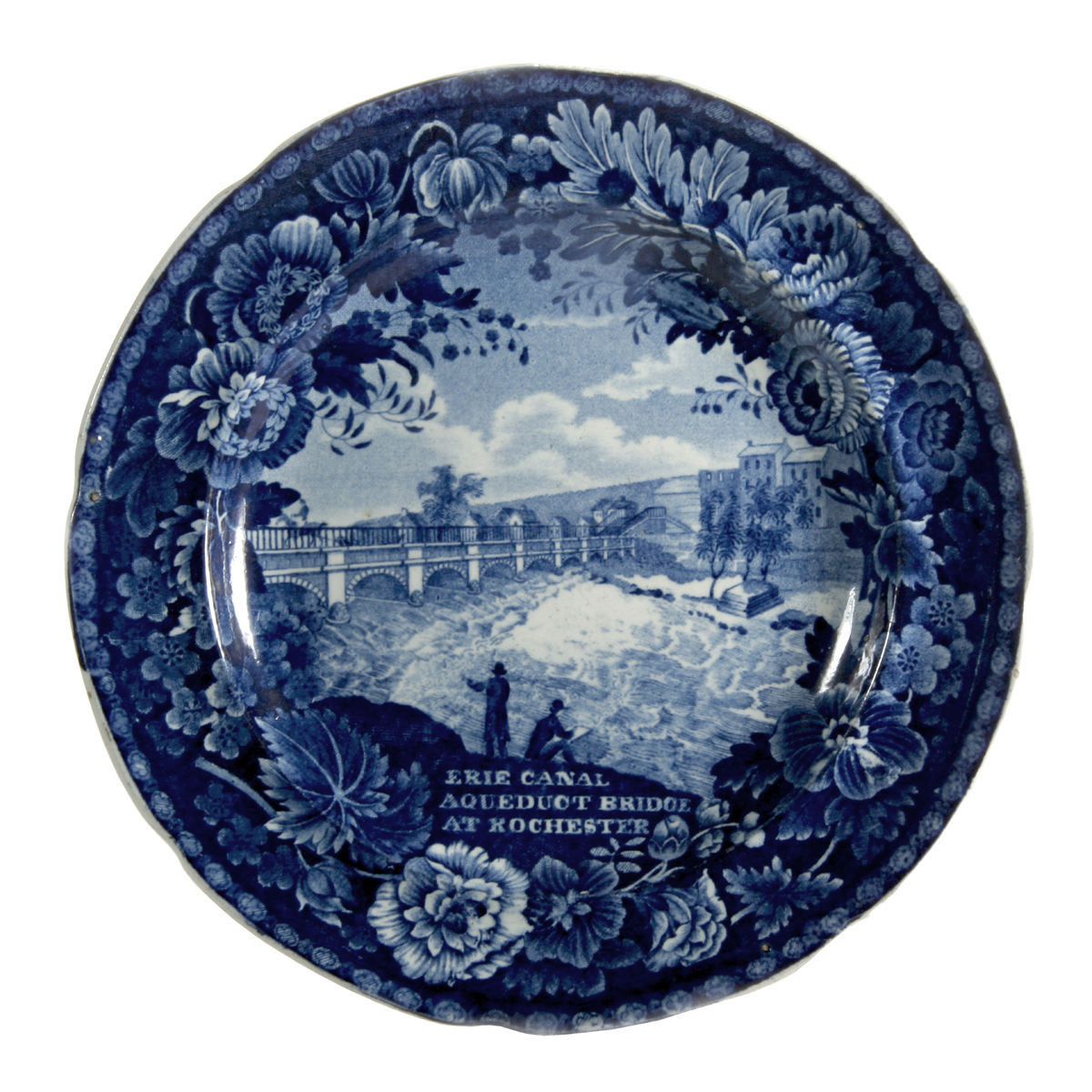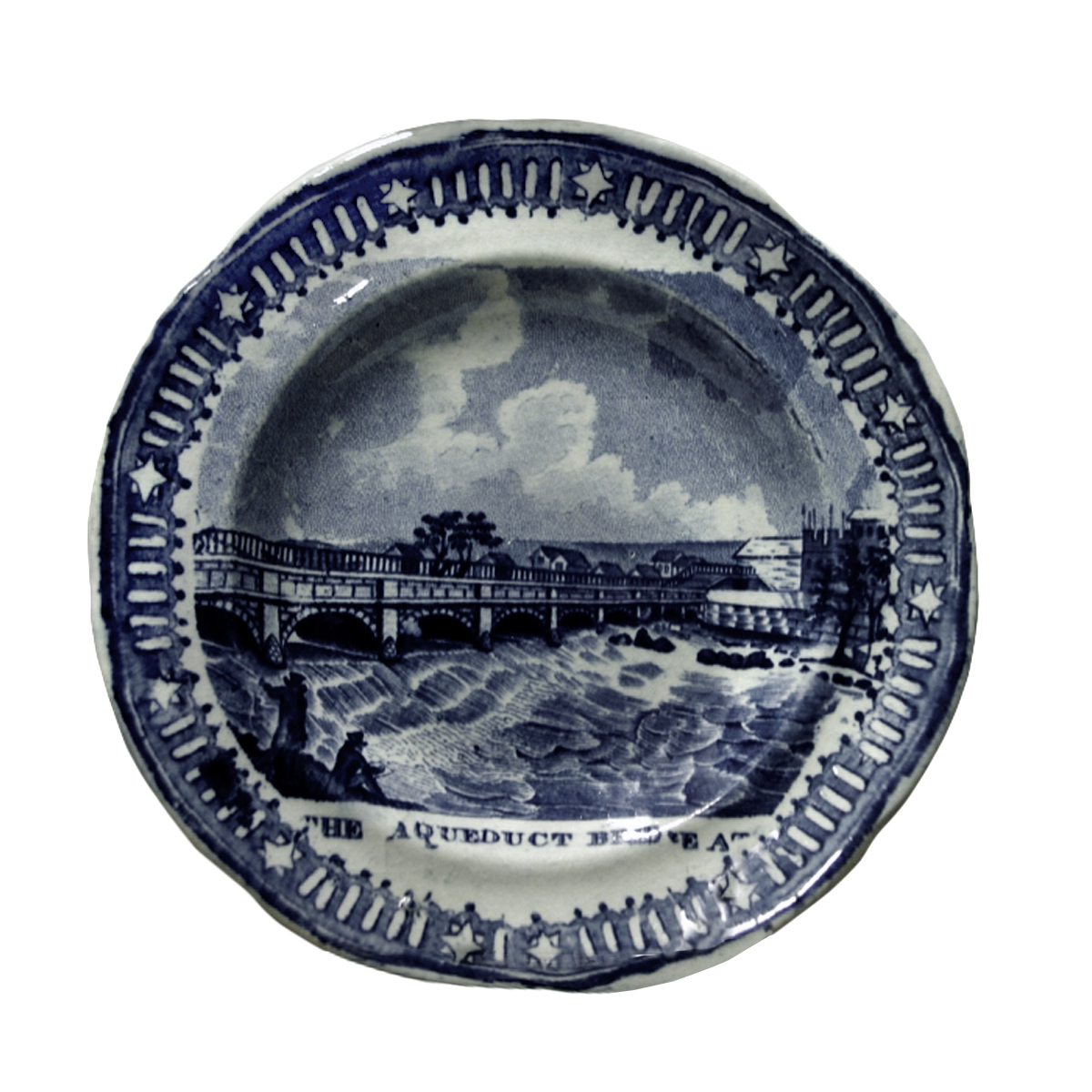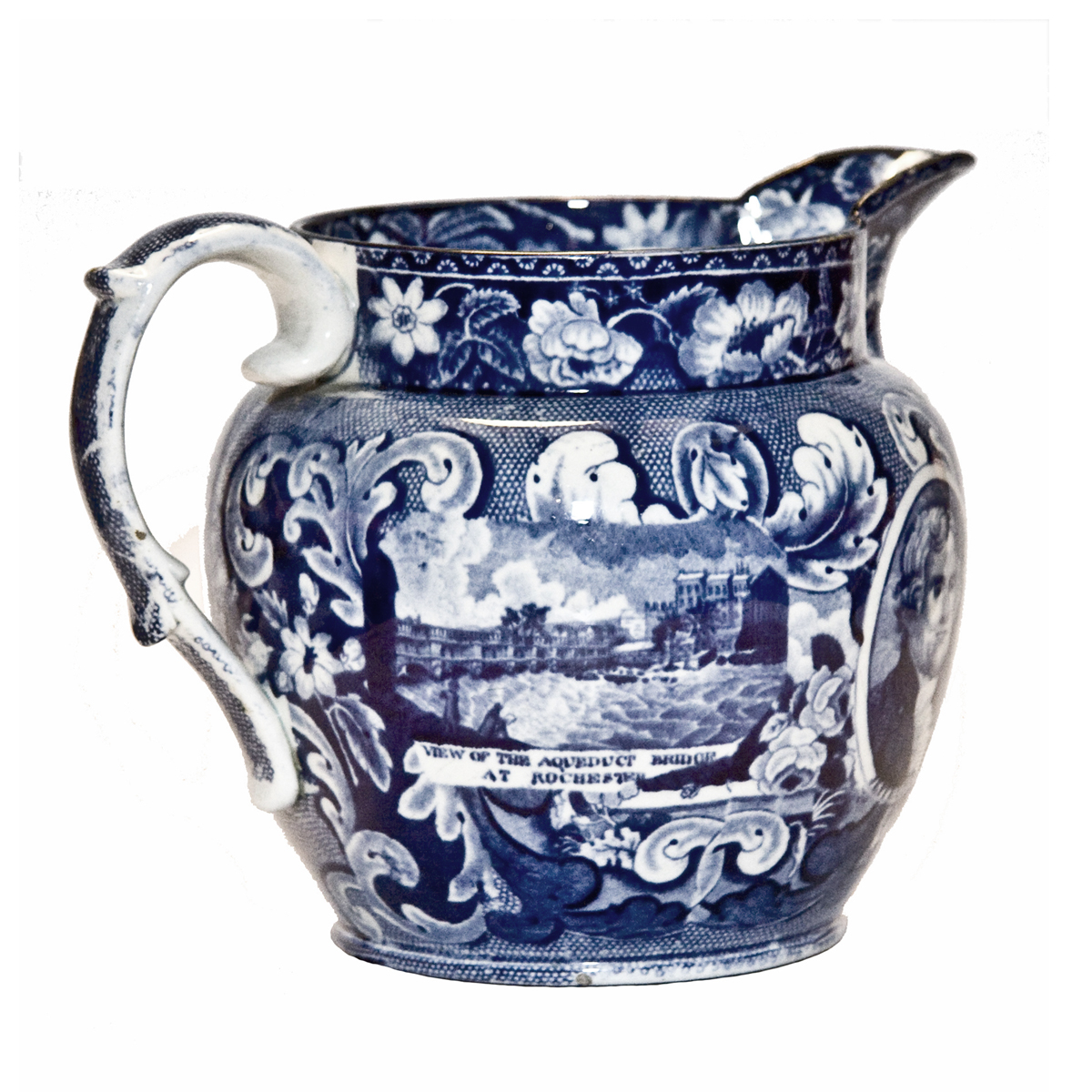
detail from the GEOLOGICAL PROFILE EXTENDING FROM THE Atlantic to Lake Erie
Winterthur Library
|
Print Title: VIEW OF THE AQUEDUCT BRIDGE AT ROCHESTER Description:
Engraving on paper signed J. Eights Del. and engraved by Rawden, Clark & Co. Albany. The print was made after a drawing on paper in ink, wash and pencil made by James Eights in 1823, now in the collection of the Albany Institute of History & Art.
Many impressive feats in engineering could be seen along the length of the Erie canal, one of the most remarkable was the stone Aqueduct which carried it over the Genesee River at Rochester, NY. Started in 1821, the flood waters of spring of 1822, washed away the first stone foundations. A second stronger construction was begun and when the aqueduct was completed in September 1823 the water flowed across it for the first time. Considered a marvel of modern engineering, the Marquis de Lafayette was taken across the aqueduct during his visit in 1824. He described it “with astonishment and admiration ... We were apparently suspended in air … several cataracts fell rumbling around us, the river Genesee rolled below our feet at a distance of fifty feet, we were some moments without comprehending our situation, which appeared the effect of magic.” The aqueduct was narrower than the Erie canal and before too long pressure of traffic and efficiencies of transport required that it be enlarged. The second Aqueduct was completed in 1842 and spans the Genesee River to this day.
Print Source:
The scene is derived from a detail from the "GEOLOGICAL PROFILE EXTENDING FROM THE Atlantic to Lake Erie engraved by Rawden, Clark & Co. Albany " first printed in 1824 in A geological and agricultural survey of the district adjoining the Erie canal in the state of New York... and re-printed on thin tissue-like paper in 1825. in Memoir, prepared at the request of a committee of the Common council of the city of New York...
More details on the source print
View all source prints »
|





